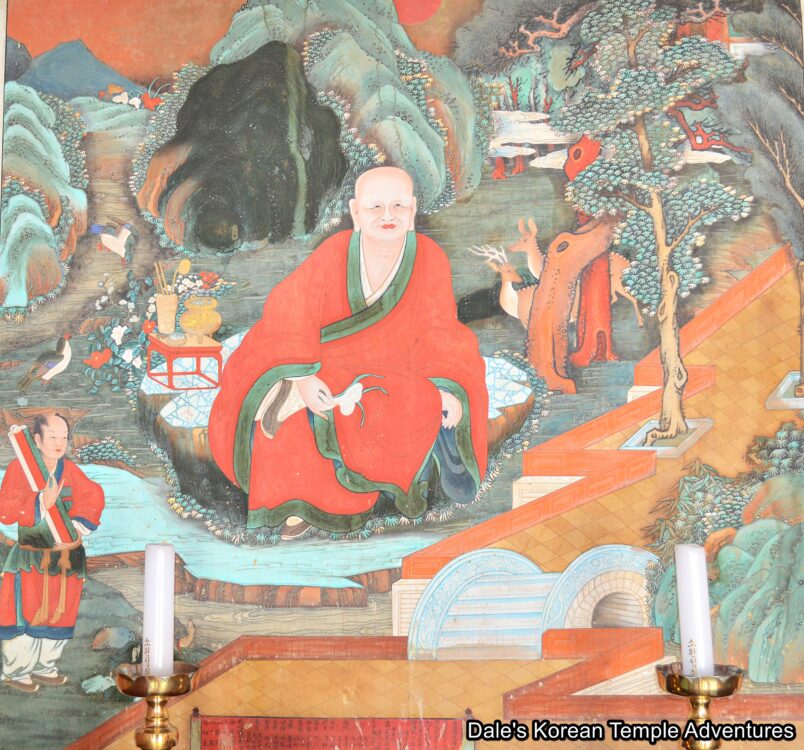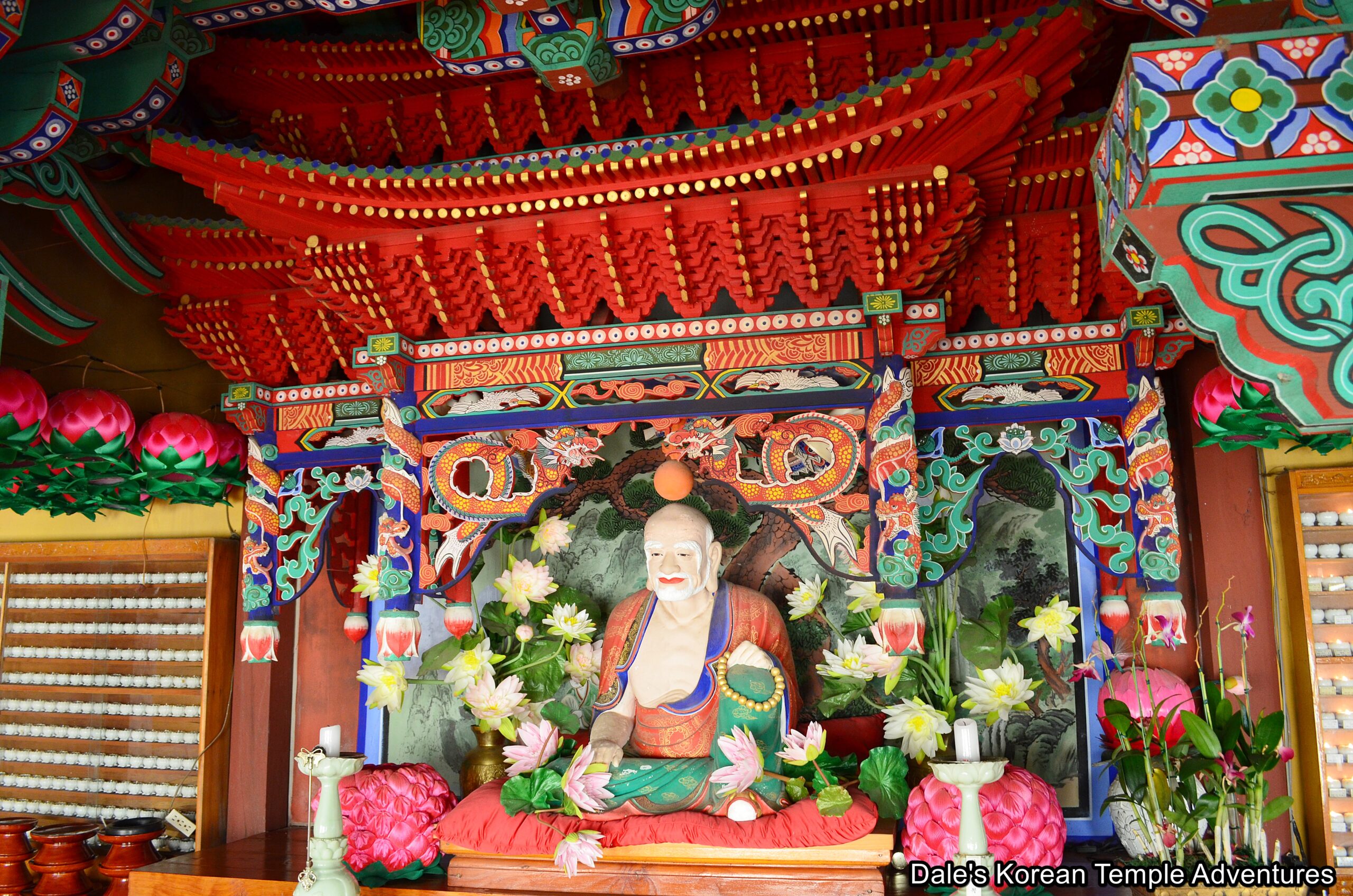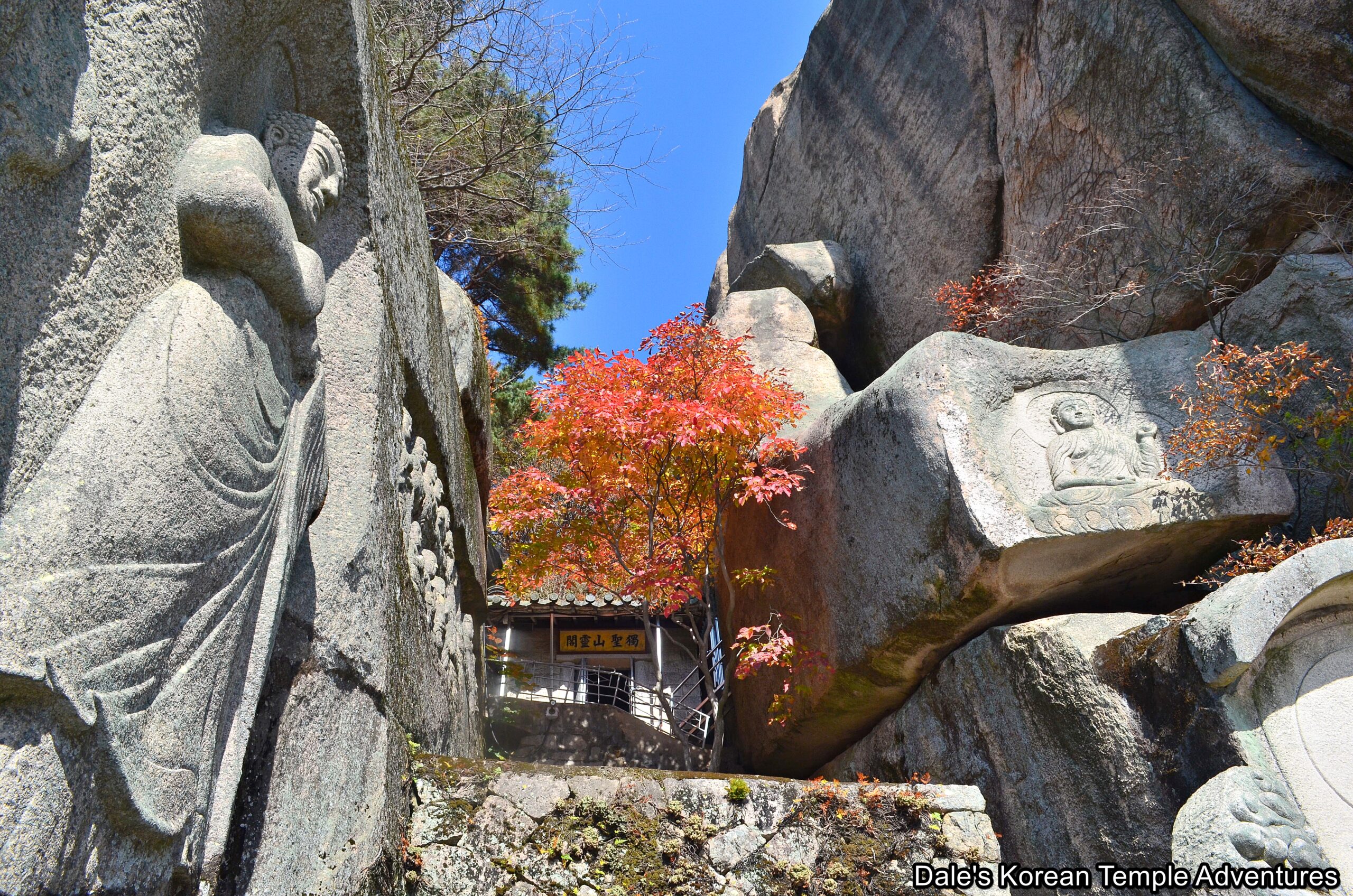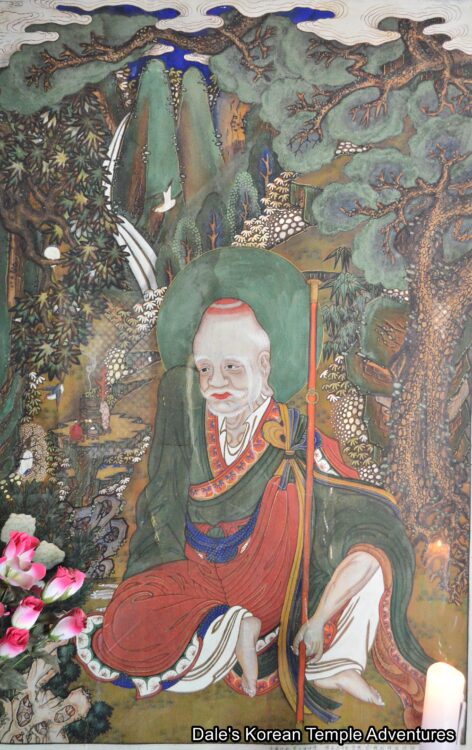Dokseong-gak – The Lonely Saint Hall: 독성각

Introduction
Another shaman deity that you can find at a Buddhist temple in Korea is Dokseong, or “The Lonely Saint,” in English. The reason he’s called this is because he’s away from the Historical Buddha, Seokgamoni-bul. Dokseong is also sometimes referred to as Naban-jonja. It’s believed that Dokseong was a Nahan, one of the original disciples of the Buddha, Seokgamoni-bul. It’s even been suggested that Dokseong was one of Seokgamoni-bul’s original disciples: Pindola. Dokseong will remain on Earth to help those in need of his support as a form of punishment for his careless performance of miracles. As a result, Dokseong will remain on Earth until Mireuk-bul (The Future Buddha) appears in 5.67 billion years. Dokseong acts as a bridge between the past Buddha, Seokgamoni-bul and the Future Buddha. Put another way, Dokseong will be the only one to have met both the present and future Buddha in his lifetime.
Dokseong-gak Design
Dokseong is Buddhist in origin; and as a result, he has a shaved head just like a monk. He also wears a monk’s robe, and he sometimes has a saintly halo around his head. He also has extremely long eyebrows. He’s situated in a pastoral cliff setting much like Sanshin. He also has a wooden rosary clasped in his hand, and he has an attendant, or “dongja,” in Korean, that assists Dokseong. Dokseong is worshiped for prosperity, achievement, fertility, and good fortune. Uniquely, and unlike Chilseong (The Seven Stars), Sanshin (The Mountain Spirit), and Yongwang (The Dragon King), it appears as though shamanism absorbed Dokseong into its religious pantheon, and not vice versa, like in the other three cases.


Typically, you’ll find Dokseong inside the Samseong-gak Hall at a Korean Buddhist temple, but sometimes you’ll find Dokseong all alone in his own Dokseong-gak Hall. And even rarer, you’ll find him in a Dokseong/Sanshin-gak Hall like at Seokbulsa Temple in Buk-gu, Busan.
Great Examples
The finest examples of Dokseong murals can be found at Daeheungsa Temple in Haenam, Jeollanam-do; Seongjusa Temple in Changwon, Gyeongsangnam-do; Dasolsa Temple in Sacheon, Gyeongsangnam-do; Silleuksa Temple in Yeoju, Gyeonggi-do; and the intricate painting at Yonghwasa Temple in Yangsan, Gyeongsangnam-do.
Conclusion
So the next time you’re at a Korean Buddhist temple, and you’re looking for someone to pray to for good fortune or prosperity, look for the figure that looks like a Buddhist monk. Because if you do, you’ll find Dokseong, the Lonely Saint. And hopefully, you’ll have all your prayers answered.

